Cave temples of Ellora (Ellora Caves)
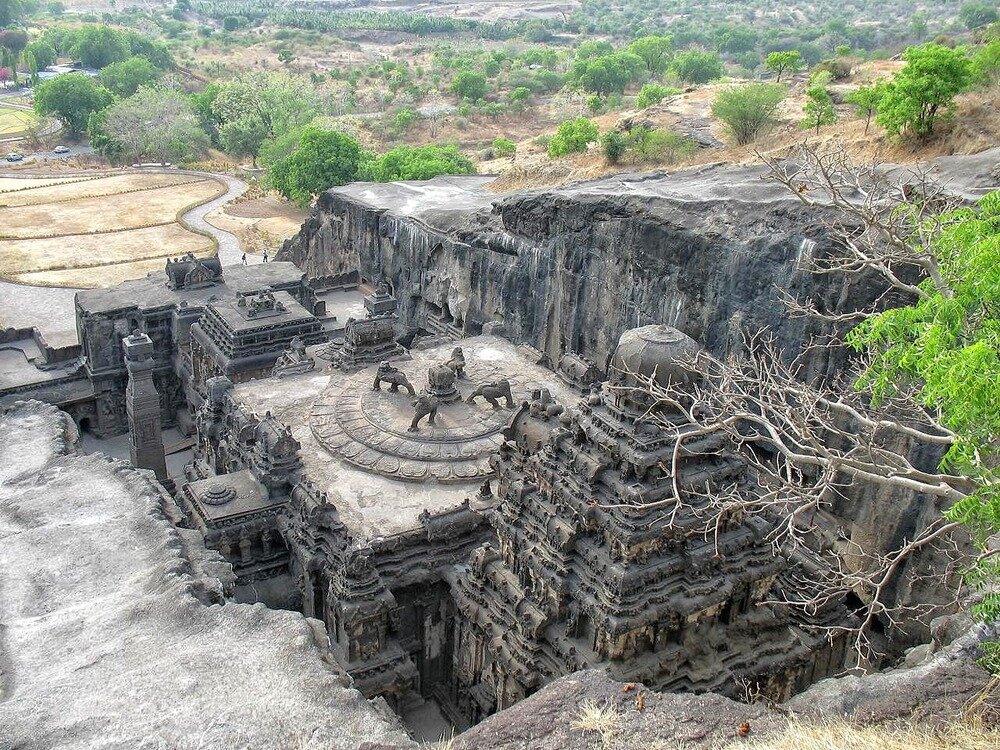
Showing you this place, once again amazed and once again as I did not even believed that long ago could build such magnificent buildings. How much work, effort and energy has been invested in these rocks!
The most visited ancient monument in Maharashtra - Ellora caves, which are 29 km north-west of Aurangabad, possibly located in a less impressive venue as their older sisters at Ajanta, but an amazing wealth of their sculptures fully compensates for this disadvantage and not in any case not to be missed if you make your way in Mumbai or Mumbai, which is 400 km to the southwest. Total 34 Buddhist, Hindu and Jain caves - some of which were created at the same time, competing with each other - surround the foot, which stretches for two kilometers cliff Chamadiri (Chamadiri) at the point where it enters the open plains. The main attraction of this site - gargantuan sizes Kailash Temple - rises up from the huge, steep walls with cavities in the hillside. The largest monolith of the world, this incredibly huge piece of solid basalt turned into a picturesque cluster of overlapping halls with colonnades, galleries and sacred altars. But let us all more ...
Ellora temples emerged in the era of state Rashtrakutov dynasty that in the 8th century united under his rule the western part of India. In the Middle Ages, many thought the state Rashtrakutov greatest state, it was compared with such mighty powers as the Arab Caliphate, Byzantium and China. The most powerful Indian rulers at the time were Rashtrakutov.
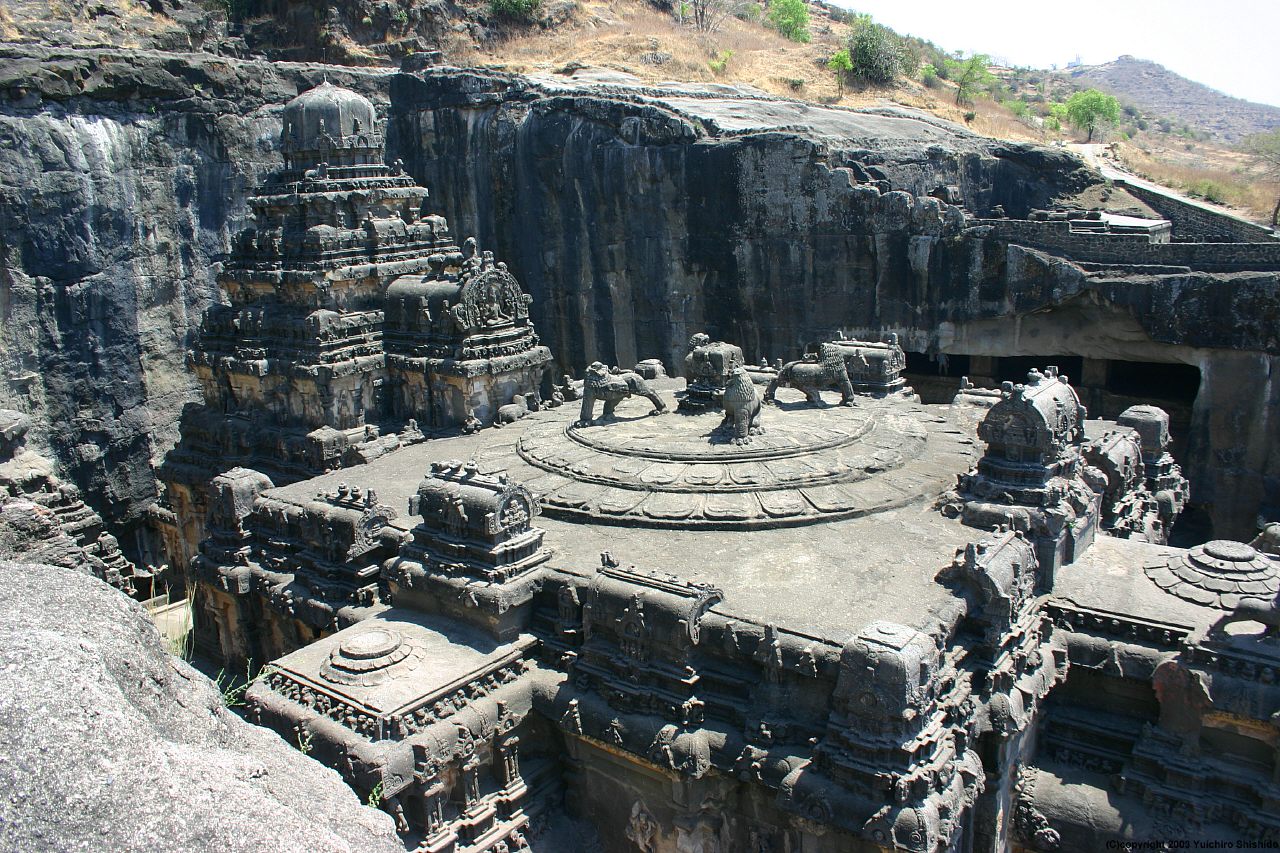
The caves were created during the period from the 6th to the 9th century AD. In total there are 34 Ellora temple and monastery. The interior of the temple is not as dramatic and richly, as in the caves of Ajanta. But here there are subtle sculpture more beautiful shape, there is a complex plan and the size of most temples anymore. And all the sights are much better preserved to this day. In the rocks were created by long galleries, and the area of one room sometimes reached 40x40 meters. The walls are artfully decorated with reliefs and stone sculptures. Churches and monasteries were established in basalt hills for half a millennium (6-10 century AD). Also characteristic is the fact that the construction of the caves of Ellora began around the time that the holy sites of Ajanta were abandoned and lost sight of.

In the XIII century by the Raja Krishna was created cave temple Kaylasantha. For very specific treatises on the construction erected a temple, they were described in great detail all. Between the celestial and terrestrial intermediate temples had become Kaylasantha. A kind of gateway.
Dimensions of 61 meters by 33 meters has Kaylasantha. 30 meters height the whole temple. Kaylasantha created gradually began to cut down from the top of the temple. First dug a trench around the blocks, which eventually turned into a temple. It cut through the hole, and later it will be the galleries and halls.

Gouging by about 400 000 tonnes of rock was created Kaylasantha temple at Ellora. From this it can be seen that those who created the plan of the temple, had extraordinary imagination. Features of Dravidian style shows Kaylasantha. This can be seen in front of the entrance gate of Nandini and in the outline of the temple, which gradually narrows towards the top, and the facade with miniature sculptures in the form of decoration.
All Hindu buildings are located around the most outstanding temple Kailash, who embodies the sacred mountain of Tibet. In contrast to the quiet and more ascetic decoration of Buddhist caves, Hindu temples are decorated with eye-catching and bright thread that is very typical of Indian architecture.
Around Chennai Tamilnande is a temple Mamalllapurama, with its towers resembles temple tower Kaylasantha. They were built around the same time.

In the building of the temple invested tremendous efforts. In the well 100 meter long and 50 meter wide, is this temple. Do Kaylasanatha base not only three-tiered monument but also a huge complex with a courtyard at the temple, porticos, galleries, halls, statues.
Cap ends in 8 meters lower part, the figures of sacred animals elephants and lions, he is surrounded on all sides. Figures guard and at the same time support the temple.

The initial reason for this is quite a remote location has become the center of such an active religious and artistic activities, became a busy caravan route that ran here, connecting the flourishing cities in the north and west coast ports. Profit from the lucrative trade came the construction of temples that were hollowed out in the rock over five hundred years of the complex started in the middle of the 6th c. n. e., at about the same time, when it was abandoned Ajanta, located 100 km north-east. It was during the late Buddhist era in central India by the end of 7. again began to rise Hinduism. Revival of Brahmanism gained strength over the next three centuries under the patronage of the Chalukya kings (Chalukya) and Rashtrakuta (Rashtrakuta) - two powerful dynasties, by which was carried out most of the work at Ellora, including the creation of Kailash temple in the 8th century. The third and last stage of the take-off of construction activity in the area came at the end of the first millennium AD, when local rulers turned from Jainism to Saivism direction Digambara. A small group of less outstanding caves in the north of the main group stands as a reminder of this era.

In contrast to the secluded location of Ajanta, Ellora has not escaped the effects of the fanatical struggle with other religions, accompanying the coming to power of the Muslims in the 13th century. Worst extremes undertaken during the reign of Aurangzeb, who in a fit of piety ordered systematically destroying "pagan idols". Although Ellora and still bears the scars of that time, most of her sculptures remained miraculously intact. The fact that the caves were cut in the solid rock, outside the zone of impact of the monsoon rains, to determine their safety in remarkably good condition.
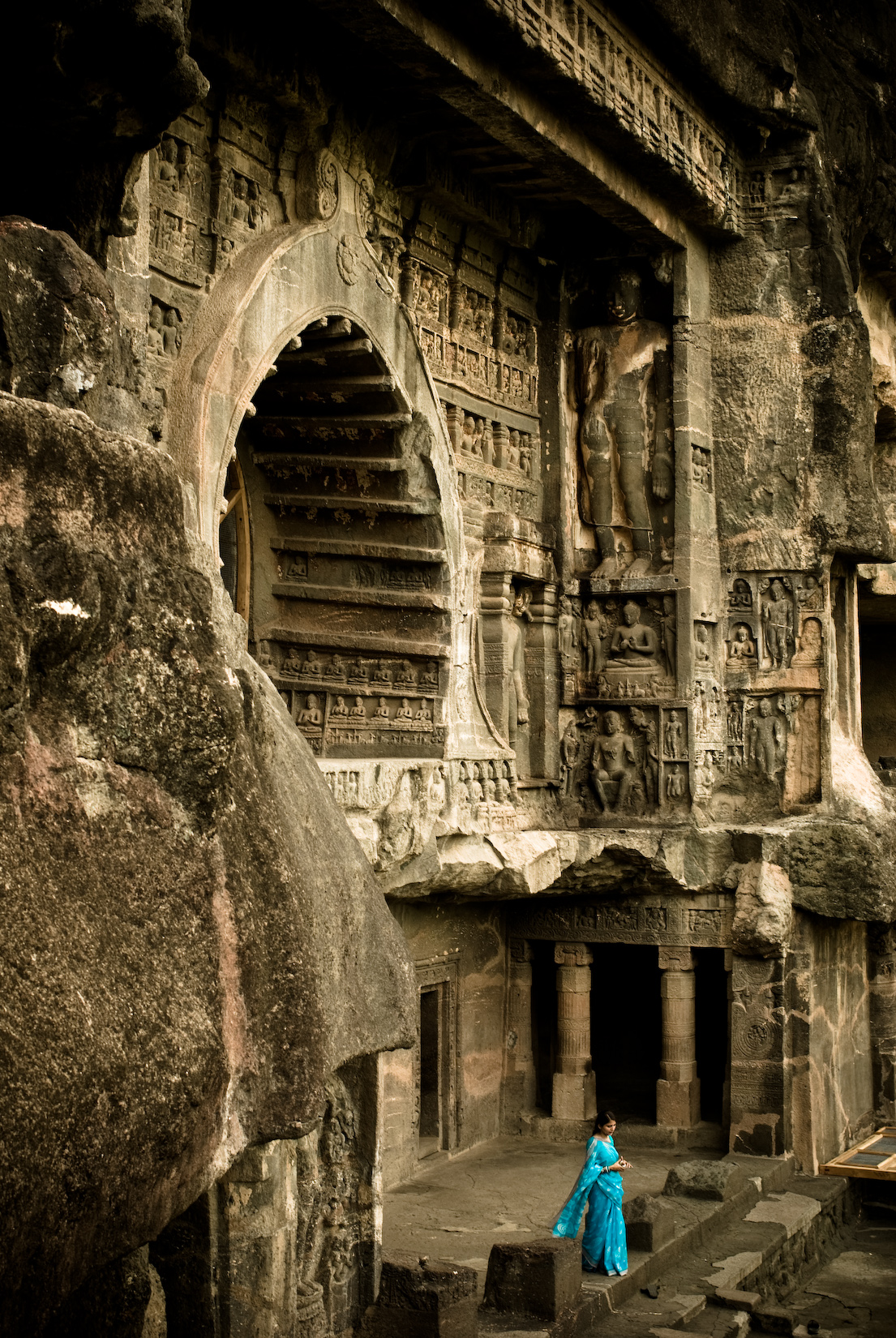
All caves are numbered according to the chronology about their creation. Numbers 1 to 12 in the southern part of the complex are the oldest and are dated from the Buddhist era Vadzhrayyana (Vajrayana) (500-750 gg. N. E.). Hindu caves numbered 17 to 29 were built simultaneously with the later Buddhist and date to the period between 600 and 870 years. new era. Located further to the north of the Jain caves - numbers from 30 to 34 - were hollowed out from 800 AD until the end of the 11th century. Due to the sloping nature of the hillside, most of the entrances to the caves to move away from ground level and is behind the open courtyards and large porches with columns, or porticoes. Entry to all caves, except Kailash Temple, free.
To first see the oldest cave, turn right from the car park, where buses arrive and walk along the main path to the Cave 1 It is gradually moving further north, without succumbing to the temptation to go to the Cave 16 - Kailash Temple, inspection is better to leave for later when at the end of the day will leave travel group, and the long shadows cast by the setting sun, revive its striking stone sculpture.

Artificial caves in the rocks scattered on the volcanic hills of northwestern Deccan, are among the most fascinating religious monuments in Asia, if not the world. Ranging from tiny to huge monastic cells, carefully made temples, they are remarkable in that they were cut by hand in solid rock. Early cave 3. BC. e. seems to be a temporary refuge of Buddhist monks, when torrential monsoon rains interrupted their journey. They copied the older wooden buildings, financed by merchants for which beskastovaya new faith was an attractive alternative to the old, discriminatory social order. Gradually, inspired by the Mauryan Emperor Ashoka, the local ruling dynasty also began to turn to Buddhism. Under their protection, for 2 to. BC. e., Karli, Bhaja and Ajanta were created the first large cave monasteries.

At this time in India was dominated ascetic buddiystskaya Theravada school. Closed religious communities interacted little with the outside world. Caves created in this era consisted largely of simple "prayer halls" (chaityas) - long, rectangular apsidal chamber with cylindrical vaulted roofs and two low passes with columns, gently curving around the back of the monolithic stupa. As a symbol of Buddha's enlightenment, these hemispherical mounds were the main centers of worship and meditation, around which a community of monks made their ritual circumambulation.
Methods used in the creation of caves, have changed little over the centuries. Initially, the front part of the main dimensions of rock applied decorative facade. Then a group of masons cut down the rough hole (which later became an elegant window Chaiten in a horseshoe shape), through which they cut further into the depth of the rock. As soon as the workers get to the floor, using a heavy iron picks, they left intact pieces of rock that skilled sculptors then converted into columns, friezes and prayer stupa.

K 4. n. e. School Hinayyana began to give way to a more inclined to luxury school of Mahayana, or "Great Vehicle". Greater emphasis on this school ever increasing pantheon of deities and bodhisattvas (merciful saints, who delayed their own attainment of Nirvana in order to help humanity in its progress towards Enlightenment) and put it in the change of architectural styles. Chaiten were driven ornate monastery halls, or Vihara in which the monks lived and prayed, and the image of the Buddha has become increasingly important. Having taken place before the end of the hall stood a stupa around which committed ritual rounds, appeared a huge image that carried a 32 characteristics (lakshanas), including long-hanging earlobes, convex skull, curls, Buddha distinguish from other creatures. Mahayana art reached its peak at the end of the Buddhist era. Creating a vast catalog of themes and images contained in ancient manuscripts such as the Jataka (the legend of the previous incarnations of the Buddha), and presented at the amazing, causing a sense of awe samples of wall paintings at Ajanta, perhaps partly due to an attempt to stir interest in the belief that to had already began to fade in the region.

Buddhism desire to compete with the resurgent Hinduism that emerged in the 6th century. Eventually led to the creation within the Mahayana new, more esoteric religious movement. Vadzhrayana direction, or "Thunder Chariot," Emphasizing the creative principle and claiming femininity, shakti; in secret rituals here used spells and incantations. However, in the end, such modifications have been in India powerless in the face of the revived appeal Brahmanism.
Subsequent transfer of the royal patronage and popular on the new faith is best evident in the example of Ellora, where for 8. many of the old viharas were converted into churches, and dwelt in their sanctuaries polished Shivalinga instead stupas or statues of Buddha. Hindu cave architecture, with its tendency to dramatic mythological sculpture, received its highest expression in the 10th century., When it was created a magnificent temple of Kailash - a giant copy of the structures on the surface of the earth, which have already started to replace the caves carved into the rock. It Hinduism brought the brunt of fanatical medieval persecution of other religions Islam, reigned in the Deccan, and Buddhism had already long been moved to the comparative safety of the Himalayas, where thriving today.

Buddhist caves are located on the sides of a shallow recess in the side of a cliff Chamadiri. All except the 10 caves are Vihara or monastery rooms that monks originally used for training, meditation and solitude of Common Prayer, as well as for such worldly pursuits, like eating and sleeping. As soon as you pass over them, the halls will gradually become more and more impressive in size and style. Scientists attribute this to the rise of Hinduism and the need for competition in an effort to seek the patronage of rulers with more successfully adjusts to the reverential way Shaiva cave temples, which were dug so close in the neighborhood.

Caves 1 to 5
Cave 1, which may have been the granary, as its largest room is a simple, devoid of decoration vihara that houses eight small cells and almost no sculpture. In a much more impressive Cave 2, a large central chamber supports twelve massive columns with square bases, and along the side walls of the seated Buddha statue. On each side leading to the altar room entrance towering figures of two giant dvarapala or guards gate unusually muscular Padmapani, the bodhisattva of compassion with a lotus in her hand, left, and ornate jewelry Maitreya, "the Buddha of the Future", on the right. Accompany both spouses. Inside the sanctuary on a throne in the form of a lion sits majestic Buddha, who looks stronger and more determined than their predecessors undisturbed at Ajanta. Caves 3 and 4, which are a little older and are similar in design to the Cave 2, are in pretty bad shape.
Known as "Maharvada" (because during the monsoon it refuge local tribe Mahars) Cave 5 is the largest one-story vihara at Ellora. Its huge, 36 m long, rectangular meeting room, talking, used by the monks as a refectory, it stretched two rows of benches cut into the stone. At the far end of the hall, the entrance to the central sanctuary guarded by two beautiful statues of bodhisattvas - Padmapani and Vajrapani ("Mount Thunder"). Buddha sits inside, this time on the dais; his right hand touches the ground making a gesture indicating the "Miracle of a Thousand Buddhas", which makes a teacher to confuse a group of heretics.

Cave 6
The four caves were dug around the same time in the 7th century. and are merely a repetition of its predecessors. On the walls of the lobby at the far end of the central hall in the Cave 6 are the most famous and well-made statue. Tara, the wife of the Bodhisattva Avalokiteshvara, is on the left, with an expressive, friendly face. On the opposite side is a Buddhist goddess teachings Mahamayuri (Mahamayuri), shown with a symbol in the form of a peacock in front of her at the table sits a diligent student. Obvious parallel between Mahayuri and the corresponding Hindu goddess of knowledge and wisdom, Saraswati (a mythological means of transportation of the latter, however, was a goose), which demonstrates the extent to which Indian Buddhism 7. borrowed elements in competition with religion in an attempt to revive his own weakened popularity.

Caves 10, 11 and 12
Dug in the early 8th century. Cave 10 is one of the last and most magnificent halls caitya in the caves of the Deccan. The left of the big veranda start stair climbing to the upper balcony on the internal balcony leads triple pass with flying horsemen, celestial nymphs and a frieze decorated with playful dwarfs. It has a beautiful view of the room with its octagonal columns and vaulted roof. From stone "rafters" carved on the ceiling beams of simulations that were present in earlier wooden structures, there is the popular name of this cave - "Soutar Dzhhopadi" - "carpenter's workshop." At the far end of the hall on a throne erected in front of votive stupa Buddha sits - this group is a central place of worship.
Despite the opening in 1876 of its first hidden underground floor, Cave 11 is still referred to as "Dho Tal" or "two-tier" cave. Its top floor is a long columned hall meeting with the sanctuary of the Buddha, and the images on the back wall of Durga and Ganesha, son of Shiva with the head of an elephant, indicate that the cave was converted into a Hindu temple after was abandoned Buddhists.
A nearby cave 12 - "Tin Tal" or "three-tiered" - is another three-tiered Vihara, the entrance to which is through a large outdoor patio. Again, the main sights are on the top floor, which was once used for training and meditation. On the sides of the altar room at the end of the hall, the walls of which there are five big figures of Bodhisattvas, statues of the five Buddhas, each of which depicts one of his previous incarnations of the Master. Фигуры слева показаны в состоянии глубокой медитации, а справа — снова в положении “Чудо Тысячи Будд”.

Семнадцать индуистских пещер Эллоры группируются вокруг середины утеса, где расположен величественный храм Кайлаша. Вырубленные в начале периода возрождения брахманизма в Декане, во время относительной стабильности, пещерные храмы полны ощущения жизни, которого их сдержанные буддийские предшественники были лишены. Здесь уже нет рядов большеглазых, с мягким выражением лиц Будд и бодхисаттв. Вместо них вдоль стен тянутся огромные барельефы, изображающие динамические сцены из индуистских преданий. Большинство из них связано с именем Шивы, богом разрушения и возрождения (и главным божеством всех индуистских пещер комплекса), хотя вы также встретите многочисленные образы Вишну, хранителя Вселенной, и его многочисленных воплощений.
Снова и снова повторяются те же самые картины, что дало ремесленникам Эллоры прекрасную возможность оттачивать свою технику веками, венцом и величайшим достижением которой стал храм Кайлаша (Пещера 16). Описанный отдельно храм является достопримечательностью, которую надо непременно посетить находясь в Эллоре. Однако вы сможете лучше оценить его прекрасную скульптуру, если сначала осмотрите более ранние индуистские пещеры. Если у вас не слишком много времени, то учтите, что номера 14 и 15, расположенные прямо на юге, являются самыми интересными в группе.

Пещера 14
Датируемая началом 7 в., одна из последних пещер раннего периода - Пещера 14 - являлась буддийской вихарой, переделанной в индуистский храм. Ее план похож на Пещеру 8 с алтарным помещением, отделенным от задней стены и окруженным круговым проходом. Вход в святилище охраняют две внушительные статуи речных богинь — Ганги и Ямуны, а в алькове позади и справа, семь богинь плодородия «Сапта Матрика» качают на коленях упитанных младенцев. Сын Шивы — Ганеша с головой слона — восседает справа от них рядом с двумя ужасающими образами Калы и Кали, богинь смерти. Прекрасные фризы украшают длинные стены пещеры. Начиная с передней части, на фризах слева (если стоять лицом к алтарю) изображена Дурга, умерщвляющая демона-буйвола Махишу; Лакшми, богиня богатства, восседает на троне из лотоса, а ее прислужники-слоны поливают ее водой из хоботов; Вишну в образе кабана Варахи, спасающий богиню земли Притхви от потопа; и наконец Вишну со своими женами. Панели на противоположной стене посвящены исключительно Шиве. На второй спереди изображено, как он играет в кости со своей женой Парвати; затем он исполняет танец творения Вселенной в образе - Натараджи; а на четвертом фризе - беспечно игнорирует тщетные попытки демона Раваны сбросить его с супругой с их земного жилища - Горы Кайласа.
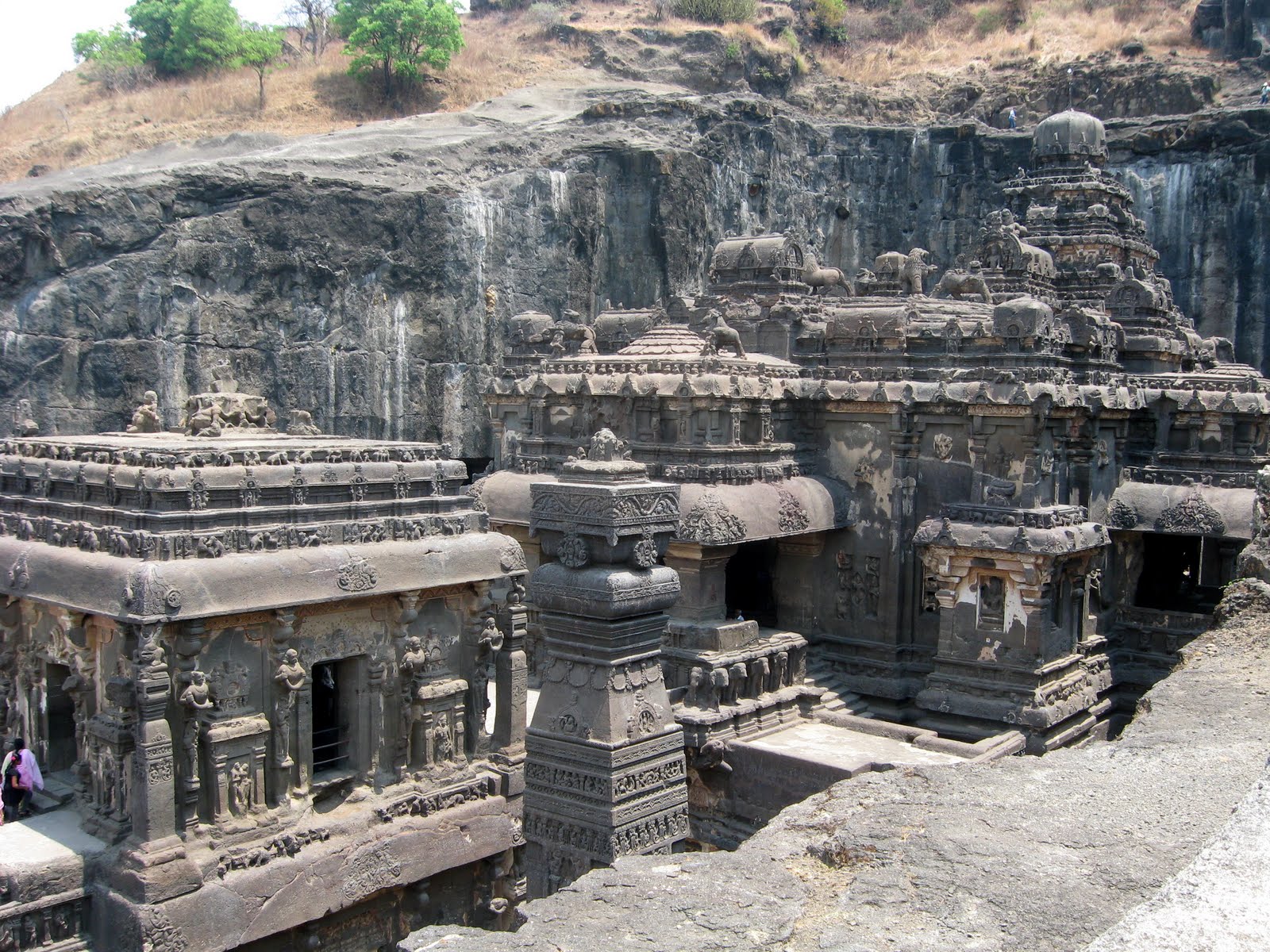
Пещера 15
Подобно соседней пещере, двухэтажная Пещера 15, ко входу в которую ведет длинная лестница, начала свое существование в качестве буддистской вихары, но была занята индусами и превратилась в святилище Шивы. Можно пропустить в целом не особенно интересный первый этаж и сразу подняться вверх, где находится несколько образцов самой величественной скульптуры Эллоры. Название пещеры - «Дас Аватара» («Десять Аватаров») - происходит от ряда панелей, расположенной вдоль правой стены, на которых представлены пять из десяти воплощений — аватар — Вишну. На ближайшей ко входу панели Вишну показан в своем четвертом образе Человека-Льва — Нарасимхи, который он принял, чтобы уничтожить демона, которого не мог убить “ни человек, ни зверь, ни днем, ни ночью, ни внутри дворца, ни снаружи” (Вишну одолел его, затаившись на рассвете на пороге дворца). Обратите на безмятежное выражение лица демона перед смертью, который уверен и спокоен, так как знает, что, будучи убитым богом, получит спасение. На втором от входа фризе Хранитель изображен в воплощении спящего “Первобытного Мечтателя”, возлежащего на кольцах Ананды — космического змея Бесконечности. Из его пупка вот-вот вырастет побег цветка лотоса, а из него выйдет Брахма и начнет творение мира.
На резной панели в углублении справа от вестибюля изображен Шива, появляющийся из лингама. Его соперники — Брахма и Вишну, стоят перед его видением униженно и просяще, символизируя преобладание в этом регионе шиваизма. И наконец, в середине левой стены помещения, если стоять лицом к святилищу, самая элегантная скульптура пещеры изображает Шиву в образе Натараджи, застывшего в танцевальной позе.

Пещеры от 17 до 29
Только три индуистских пещеры из всех расположенных на склоне холма на севере от храма Кайлаша достойны осмотра. Пещера 21 - «Рамешвара» (Ramesvara) - была создана в конце 6 в. Полагают, что она самая старая индуистская пещера в Эллоре, в ней находятся несколько изумительно выполненных образцов скульптуры, в том числе пара прекрасных речных богинь по бокам веранды, две чудесных статуи стражей-привратников и несколько чувственных любовных пар (mithunas), украшающих стены балкона. Обратите внимание также на великолепную панель с изображением Шивы и Парвати. В Пещере 25, расположенной подальше, находится поразительный образ Бога Солнца - Сурьи, погоняющего свою колесницу навстречу рассвету.
Отсюда тропа ведет мимо еще двух пещер, а затем резко спускается по поверхности крутой скалы к ее подножию, где расположено маленькое речное ущелье. Пересекая сезонную речку с водопадом, тропинка поднимается вверх по другой стороне расщелины и приводит к Пещере 29 - «Дхумар Лена» (Dhumar Lena). Эту датируемую концом 6 в. пещеру отличает необычный наземный план в виде креста, похожий на пещеру Элефанта в Мумбайской гавани. Три ее лестницы охраняют пары вздыбленных львов, а стены внутри украшены огромными фризами. Слева от входа Шива пронзает демона Андхаку (Andhaka); на соседней панели он отражает попытки многорукого Раваны стряхнуть его и Парвати с вершины горы Кайлаша (обратите внимание на толстощекого карлика, дразнящего злого демона). На южной стороне изображена сцены игры в кости, на которой Шива поддразнивает Парвати, удерживая ее руку, когда она готовится к броску.

Храм Кайлаш (Пещера 16)
Пещера 16, колоссальный храм Кайлаша (ежедневно с 6.00 до 18.00; 5 рупий) является шедевром Эллоры. В данном случае термин “пещера” оказывается ошибочным. Хотя храм, как и все пещеры, был вырублен в твердой скале, он поразительно похож на обычные сооружения на поверхности земли - в Паттадакале и Канчипураме в Южной Индии, по образцу которых он и был построен. Полагают, что этот монолит был задуман правителем Раштракуты Кришной I (756 - 773 гг.). Прошла, однако, сотня лет и сменилось четыре поколения королей, архитекторов и ремесленников, пока этот проект не был закончен. Поднимитесь вверх по дорожке, ведущей вдоль выступа северной скалы комплекса, к площадке над приземистой главной башней и вы поймете, почему.
Одни только размеры сооружения потрясают. Работы начались с выкапывания трех глубоких траншей в верхней части холма с использованием кирк, мотыг и кусков дерева, которые, намоченные в воде и вставленные в узкие трещины, расширялись и крошили базальт. Когда таким образом выделился огромный кусок необработанной скалы, к работе приступили королевские скульпторы. Оценивают, что в общей сложности четверть миллиона тонн осколков и крошки было вырублено из склона холма, импровизировать или ошибаться при этом было нельзя. Храм был задуман как гигантсткая копия гималайского жилища Шивы и Парвати — пирамидальной Горы Кайлаш (Кайласа) — тибетского пика, который, говорят, является “божественной осью” между небом и землей. Сегодня практически весь толстый слой белой известковой штукатурки, которая придавала храму вид снежной вершины горы, отвалился, обнажив тщательно обработанные поверхности серо-коричневого камня. В задней части башни эти выступы подвергались воздействиям столетий эрозии и выцвели и расплылись, как если бы от жестокого Деканского зноя гигантская скульптура медленно таяла.

Главный вход в храм ведет через высокую каменную перегородку, которая призвана разграничивать переход от мирского к царству священного. Пройдя между двумя охраняющими вход речными богинями Гангой и Ямуной, вы оказываетесь в узком проходе, который открывается в главный передний двор, напротив панели с изображением Лакшми - Богини Богатства - которую поливает душем пара слонов - эта сцена известна индусам под названием “Гаджалакшми”. Обычай требует, чтобы паломники обходили вокруг Горы Кайлаш по часовой стрелке, поэтому спуститесь по ступенькам слева и идите через переднюю часть внутреннего дворика к ближайшему углу.
С вершины бетонной лестницы в углу видны все три основные секции комплекса. Первая - вход со статуей буйвола Нанди - транспортного средства Шивы, лежащего перед алтарем; следующая - замысловато украшенные, углубленные в камень стены главного зала для собраний, или мандапы, на которой все еще сохранились следы цветной штукатурки, первоначально покрывавшей всю внутреннюю часть сооружения; и наконец, само святилище с короткой и толстой 29-метровой пирамидальной башней, или шикхарой (которую лучше всего рассматривать сверху). Эти три компонента покоятся на соответствующих размеров приподнятой платформе, которую поддерживают дюжины собирающих лотосы слонов. Кроме того, что он символизирует священную гору Шивы, храм изображает также гигантскую колесницу. Трансепты, выступающие сбоку главного зала, являются ее колесами, святилище Нанди - хомутом, а два слона без хоботов в натуральную величину в передней части внутреннего двора (изуродованные мародерствующими мусульманами) - тягловыми животными.

Большинство основных достопримечательностей самого храма ограничивается его боковыми стенами, которые покрыты выразительной скульптурой. На расположенной вдоль ведущей к северной части мандапы лестницы длинной панели живо изображены сцены из Махабхараты. На ней можно увидеть некоторые эпизоды из жизни Кришны, включая тот, который представлен в нижнем правом углу, с младенцем-богом, сосущим отравленную грудь кормилицы, присланной его злым дядей, чтобы убить его. Кришна выжил, но яд окрасил его кожу в характерный синий цвет. Если продолжать осмотр храма по часовой стрелке, вы увидите, что большинство панелей нижних секций храма посвящены Шиве. В южной части мандапы, в алькове, вырезанном из наиболее выдающейся ее части, вы найдете барельеф, который общепризнанно считается самым прекрасным образцом скульптуры комплекса. На нем показано, как Шиву и Парвати беспокоит многоголовый демон Равана, который был заключен внутри священной горы и сейчас раскачивает стены своей тюрьмы своими многочисленными руками. Шива собирается утвердить свое главенство, успокоив землетрясение движением большого пальца ноги. Парвати, между тем, беззаботно наблюдает за ним, опершись на локоть, в то время как одна из ее служанок в панике убегает.

В этом месте сделайте небольшой крюк и поднимитесь по лестнице в нижнем (юго-западном) углу внутреннего двора в “Зал Жертв” с его поразительным фризом с изображнением семи богинь-матерей, Сапта Матрика, и их ужасающих спутниц Калы и Кали (представленных стоящими поверх горы трупов), или направляйтесь прямо по ступенькам главного зала для собраний, мимо энергичных батальных сцен эффектного фриза Рамаяны, в алтарную комнату. Зал для собраний с шестнадцатью колоннами окутан мрачным полусветом, который призван сфокусировать внимание молящихся на присутствии внутри божества. С помощью портативного электрического фонарика чоукидар осветит фрагменты росписи потолка, где Шива в образе Натараджи исполняет танец рождения Вселенной, а также представлены многочисленные эротические пары митхуна. Само святилище уже не является больше действующим алтарем, хотя в нем до сих пор находится большой каменный лингам, установленный на пьедестале йони, символизируя двойственный аспект воспроизводящей энергии Шивы.

Замечательно то, что по прошествии стольких лет, на нашей земле запечатлелись навеки культурные, исторические и архитектурные наследия планеты. И одно из них - это пещеры Эллоры. Пещеры и храмы Эллоры внесены в список ЮНЕСКО, как памятники, являющиеся всемирным достоянием человечества.
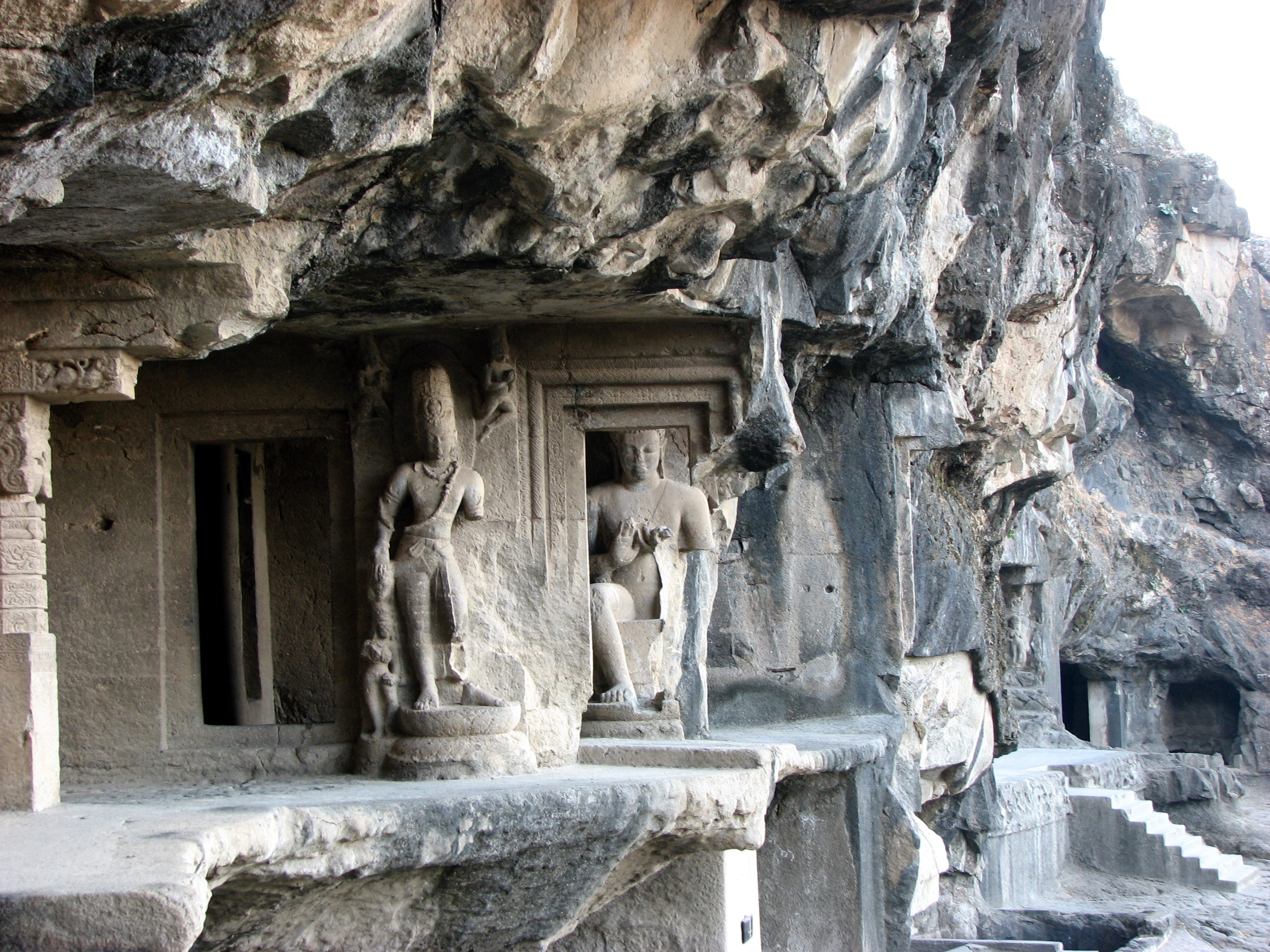
один из вопросов, который мне интересен таков: тут наверняка жило или приходило сюда множество народа. А как тут были устроены водопроводы ? Да хотя бы та же самая Канализация топас там. - как ? Казалось бы обыденное дело, но это же надо как то организовывать !




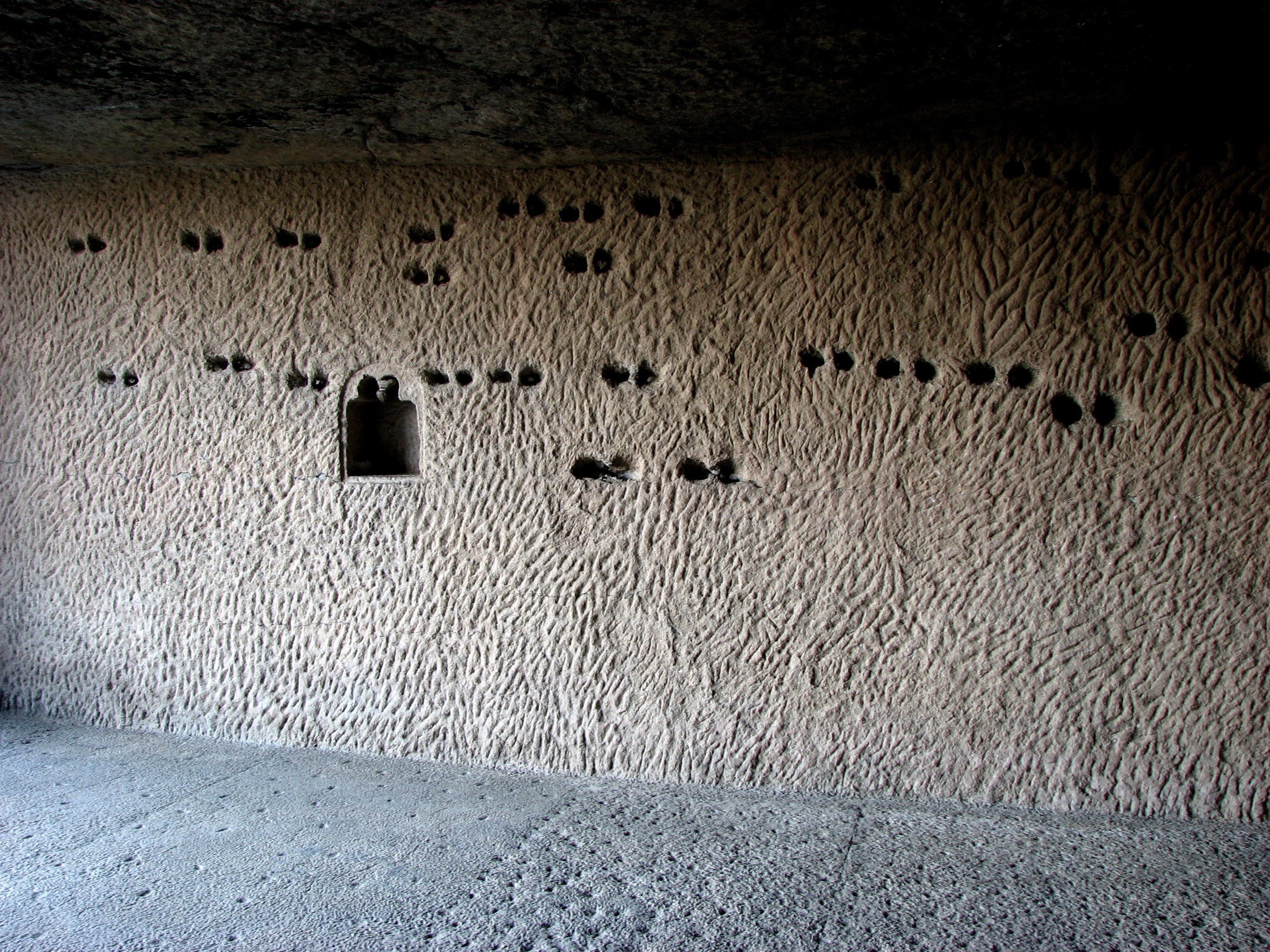

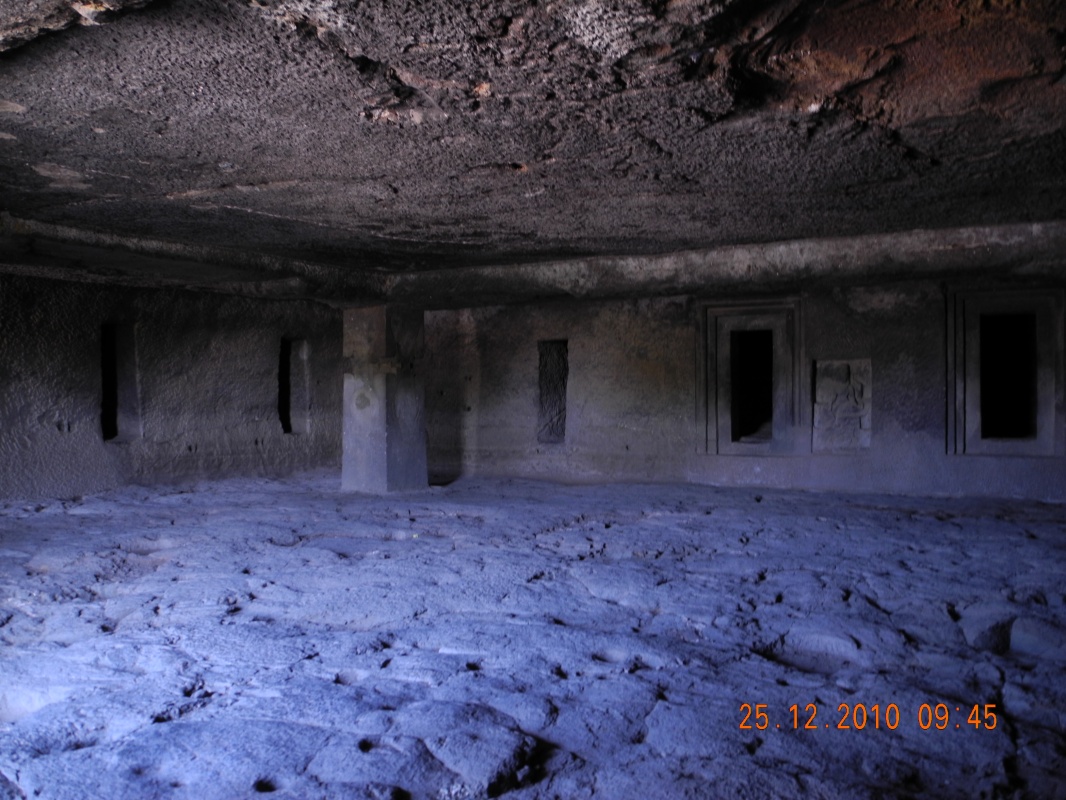









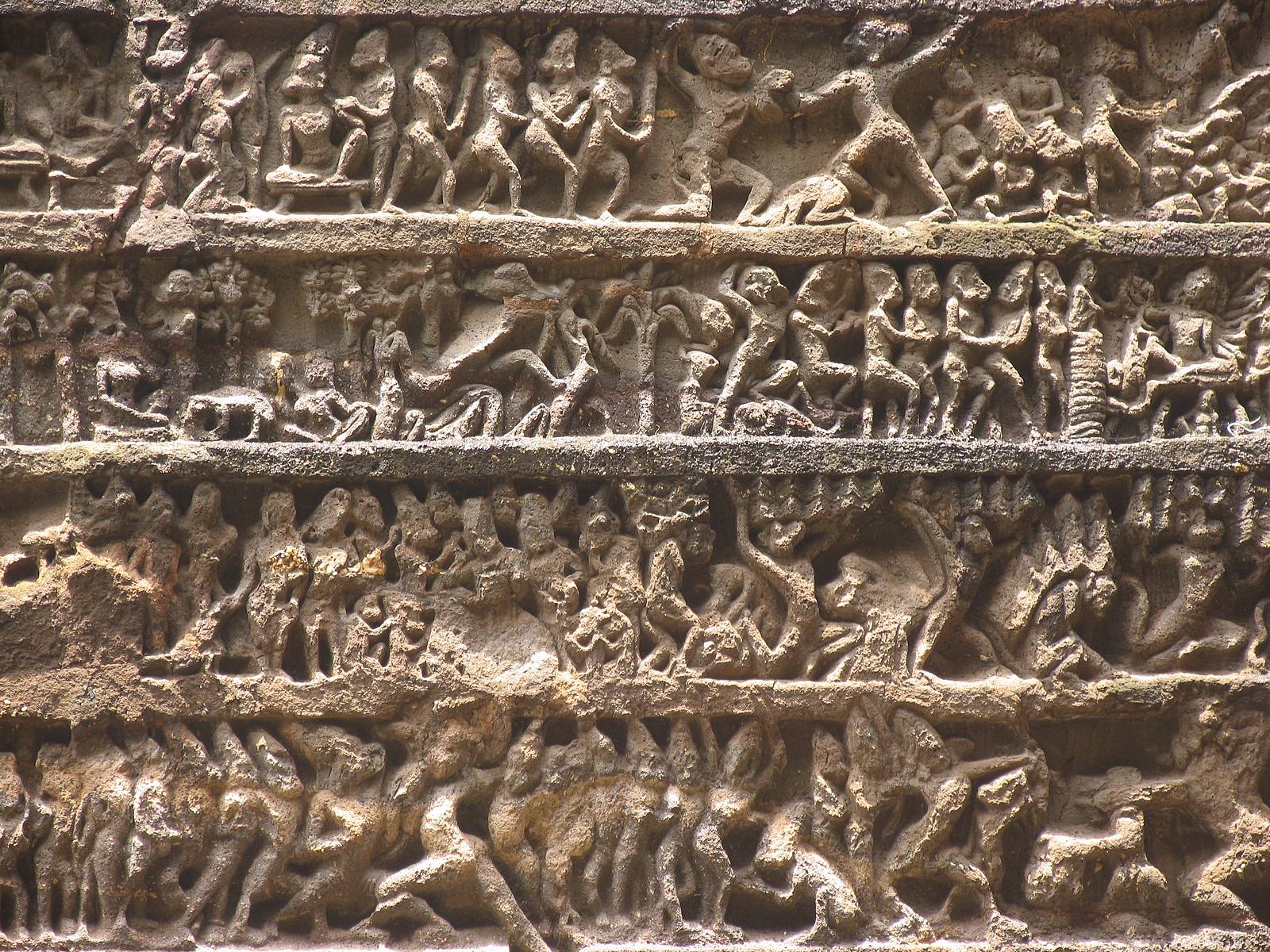






No comments:
Post a Comment